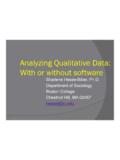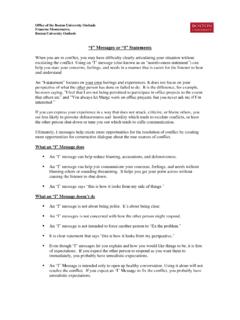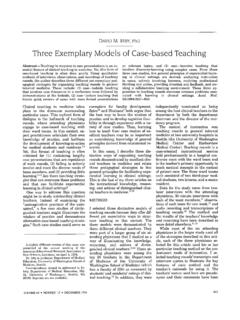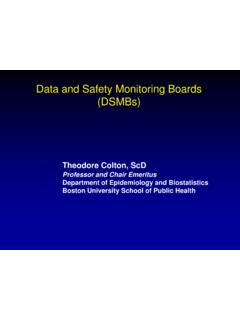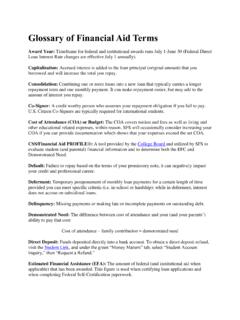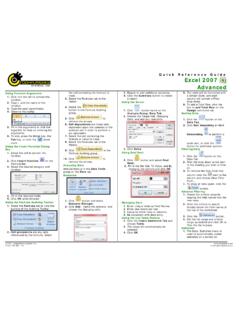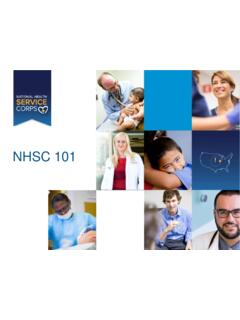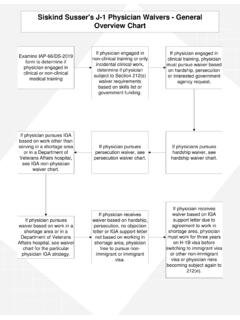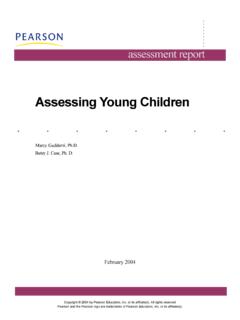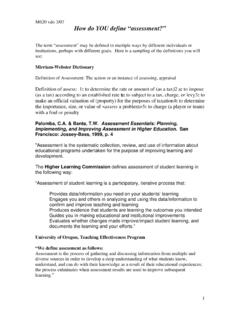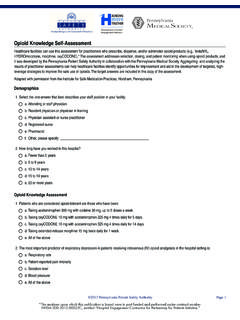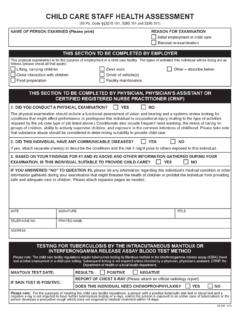Transcription of The Basics on Adverse Event Monitoring, …
1 Mary-Tara Roth, RN, MSN, MPH 1 The Basics on Adverse Event monitoring , assessment and reporting Overview of the Session Definitions Who regulates your study? Assessing AEs and UPs reporting AEs and Ups The DSMP Case Examples (time permitting) 2 3 Why is this important? The 111 Criteria 45 CFR (OHRP) and 21 CRF (FDA) 4 Risks to subjects are minimized. Risks to subjects are reasonable in relation to benefits ( favorable risk benefit ratio). Selection of subjects is equitable. Informed consent process. Informed consent documentation. Adequate provision for monitoring the safety and data. Provisions to protect privacy/maintain confidentiality. Safeguards for vulnerable populations. Regulations Guiding Clinical Research Informed Consent IRB Review/ Functions/ Operations OHRP FDA Assurance Oversight Engagement Sponsor/investigator roles and conduct Drug/device dev t & testing process 45 CFR 46 21 CFR 312, 812, 50, 54, 56 Subpart B: Pregnant women, Fetuses, neonates Subpart C: Prisoners Subpart D: Children Subpart E: IRB Registration Subpart A.
2 Protection of Human Subjects 5 45 CFR 160, 162, 164 HIPAA ( Health Insurance Portability and Accountability Act of 1996) Privacy and Security of protected health information OHRP Regs Apply Research involving human subjects conducted or supported by HHS that is not otherwise exempt OR Non exempt human subject research covered by Assurance of Compliance (whether or not conducted or supported by HHS) 6 Does FDA regulate your study? Clinical Investigation means any experiment that involves a test article and one or more human subjects that either is subject to requirements for prior submission to the FDA under section 505(i) or 520(g) of the the results are intended to be submitted to as part of an application for a research or marketing (21 CFR (c)) most studies testing drugs/devices, even if they are previously approved and currently FDA Regs IND: Investigational New Drug Application 21 CFR 312 21 CFR IND exemption Investigator Responsibilities ( ) Sponsor Responsibilities ( ) IDE: Investigational Device Exemption 21 CFR 812 Investigator Responsibilities ( ) Sponsor Responsibilities ( ) IRB and Consent 21 CFR 50 (Protection of Human Subjects) and 21 CFR 56 (IRB) Change New FDA Regulations re.
3 AE reporting for IND Studies Significant updates to IND regs published in Federal Register 9/29/10 New regs in effect 3/28/11 Important implications for Sponsors and Investigators 9 Final Rule on IND Safety reporting See 2/2010 FDA guidance and read updated IND regs. 10 Go-to Regs and Guidance re: AEs FDA FDA Regs (Drugs): 21 CFR (IND reporting ) FDA Regs (Devices): 21 CFR ; (definitions); Guidance for Industry and Investigators: Safety reporting Requirements for INDs and BA/BE studies, December, 2012 Guidance for Clinical Investigators, Sponsors, and IRBs: AE reporting to IRBs Improving Human Subject Protection, Jan. 2009 OHRP 45 CFR (b) (5) OHRP Guidance on UPs and AEs, Jan. 15, 2007 ICH GCP Definitions: , , Investigator: Sponsor: AE monitoring / reporting Institutional policies Regs + Guidance under which your study is conducted OHRP (45 CFR ), FDA (drugs/biologics: 21 CFR 312; ; marketed drugs: 21 CFR ; ; devices: 21 CFR ), ICH GCP ( , , ) Protocol (definitions of AEs, SAEs, etc.)
4 Sponsor requirements Funding agency requirements ( if different from sponsor ) Requirements of the DSMB and/or Steering committee 11 What can cause an Adverse Event ? 12 Adverse events Adverse Event (AE) Serious Adverse Event (SAE) Unanticipated problems (UP) 13 A few AE Definitions Any untoward or unfavorable medical occurrence in a human subject, including any abnormal sign (for example, abnormal physical exam or laboratory finding), symptom, or disease, temporally associated with the subject s participation in the research, whether or not considered related to the subject s participation in the research. (OHRP Guidance, Jan. 2007) Any untoward medical occurrence associated with the use of a drug in humans, whether or not considered drug related. (21 CFR (a)) Any untoward medical occurrence in a patient or clinical investigation subject administered a pharmaceutical product and which does not necessarily have a causal relationship with this any unfavorable or unintended symptom, or disease temporally associated with the use of a medicinal product, whether or not considered related to the medicinal product.
5 (ICH E2A and E6) 14 A few AE Definitions Unanticipated Adverse Device Effect: Any serious Adverse effect on health or safety or any life-threatening problem or death caused by, or associated with, a device, if that effect, problem, or death was not previously identified in nature, severity, or degree of incidence in the investigational plan or application (including a supplementary plan or application) or any other unanticipated serious problem associated with a device that relates to the rights, safety, or welfare of subjects. (21 CFR (s)) 15 AE Definitions: Non-medical studies Define AEs around known potential for: Invasion of privacy Breach of confidentiality AEs related to study procedures oWhat s plausible (considering procedures), but would be considered unexpected if it occurred?
6 16 A few AE Definitions (FDA IND) Suspected Adverse reaction: Any Adverse Event for which there is a reasonable possibility that the drug caused the Adverse Reasonable possibility : evidence to suggest a causal relationship between the drug and the Adverse Event . (21 CFR ) Adverse reaction: Subset of suspected Adverse reactions Any Adverse Event caused by a drug. (FDA Guidance, 12/12) 17 Adverse Event Suspected Adverse reaction Adverse reaction Serious Adverse Event Definition Any Adverse Event that: results in death; is life-threatening (places the subject at immediate risk of death from the Event as it occurred); results in inpatient hospitalization or prolongation of existing hospitalization; results in a persistent or significant disability/incapacity; results in a congenital anomaly/birth defect; or based upon appropriate medical judgment, may jeopardize the subject s health and may require medical or surgical intervention to prevent one of the other outcomes listed in this definition.
7 (OHRP Guidance on UPs and AEs, Jan. 15, 2007) Similar definitions: FDA: 21 CFR ; ICH: E6 ; E2A section II B 18 Life-threatening Places the subject at immediate risk of death. Does not include an AE that might cause death in a more severe form. 19 Expectedness (FDA) Unexpected: Not listed in Investigator Brochure or is not listed at the specificity or severity that has been observed, or, if an investigator brochure is not required or available, is not consistent with the risk information described in the general investigational plan or elsewhere in the current application. FDA Guidance Dec. 2012 20 Unanticipated Problems (UPs) Any incident, experience, or outcome that meets all of the following criteria: Unexpected in terms of nature, severity, or frequency, given a) the research procedures that are described in the protocol-related documents b) the characteristics of the subject population being studied; Related or possibly related to a subject s participation in the research; and Suggests that the research places subjects or others at a greater risk of harm (including physical, psychological, economic, or social harm) related to the research than was previously known or recognized.
8 (OHRP Guidance on UPs and AEs, Jan. 15, 2007) 21 Unanticipated Problem (OHRP Guidance on UPs and AEs, Jan. 15, 2007) Most Adverse events are not unanticipated problems Unanticipated problems include other incidents, experiences, and outcomes not considered Adverse events 22 Unanticipated Problems (UPs) An incident does not need to result in actual harm to a subject in order for the incident to be considered a UP involving risks to subjects or others. 10/30/09 OHRP Determination letter to Mt. Sinai Medical Center, Miami, FL The Trial to Assess Chelation Therapy protocol specified that infusions should be completed in no less than 3 hours to allow for safe infusion rates 440 instances involving 251 subjects across 63 sites where shorter infusion times occurred ..some subset of the events associated with technician error or for which the cause was unknown may have represented unanticipated problems involving risks to 23 Assessing AEs and Ups (FDA IND) Investigator and Sponsor assess: Seriousness: Regulatory definition Expectedness: nature or severity is not consistent with information already known about the drug.
9 Severity: intensity of a specific Event Grading scales based on: Common Terminology Criteria for Adverse events Grading based on signs and symptoms Grading based on effect on usual daily activities Causality/relatedness (suspected Adverse reaction?) Ex: Definite, Probable, Possible, Unlikely (or some rating scale) Yes or No (Was there a reasonable possibility that the drug caused the Event ?) 24 Investigator assesses causality but sends all SAEs to sponsor. Sponsor assesses causality with benefit of all data from sites, etc. This is NOT about what s expected in the subject s disease process or what s expected in this Assessing AEs: Severity Scale example Category Toxicity Gr 0 Gr 1 Gr 2 Gr 3 Gr 4 Cardiac HTN None Asymp., transient inc. by > 20 mm Hg (D) or to > 150 / 100 if prev. WNL.
10 No tx required. recurrent or persistent inc. by > than 20 mm HG (D) or to > 150 / 100 if prev. WNL. No tx req. Req. tx Hyper-tensive crisis GI Vomiting None 1 episode in 24 hrs 2-5 in 24 hrs 6-10 in 24 hrs >10 in 24 hrs; req. parenteral support 25 Relatedness/Causality Questions to ask in assessing causality are: Is the AE a known reaction of the intervention? Is the AE similar to other Adverse events listed the investigator s brochure or consent documents? Has the AE occurred before in this study? Is the AE reasonably temporally related to the intervention? Does the AE improve or disappear when the intervention is discontinued? What happens on re-test? Was the AE present at the baseline assessment of the subject or in the subject s recent medical history? Can the AE be reasonably explained by the subject s clinical disease status?
